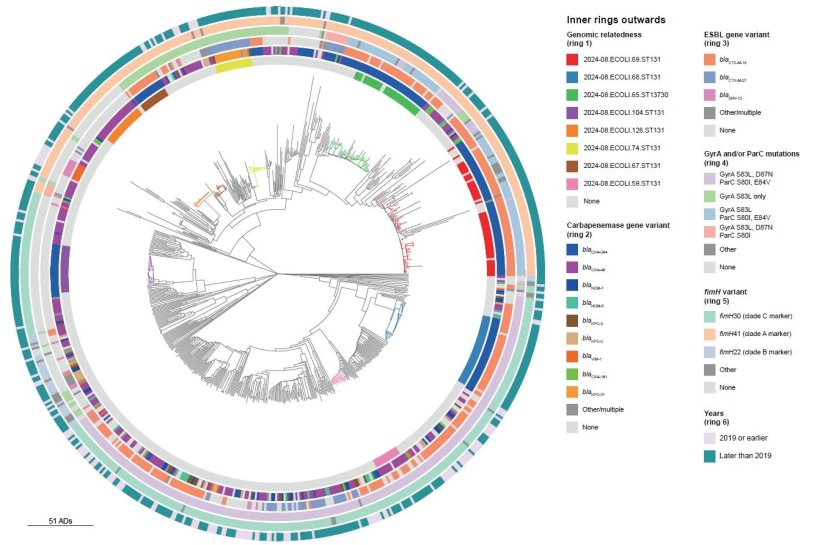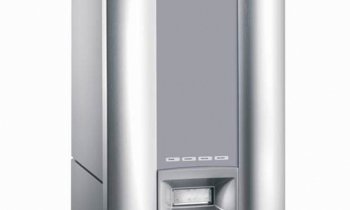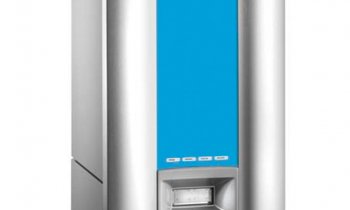© fusebulb - stock.adobe.com
News • Emergence of E. coli
Studies reveal circulation of multidrug-resistant Enterobacterales in Europe
Patients seeking treatment in hospital or other healthcare facilities can be particularly vulnerable for infections they acquire during their stay, especially if the infections are difficult to treat because they are resistant to commonly used drugs.
Carbapenem-resistant Enterobacterales (CRE) are known to particularly affect hospitalised patients. Two studies published in Eurosurveillance marking World AMR Awareness Week from 18 to 22 November 2024, analysed new data on spread of such CRE, namely Escherichia coli sequence type (ST)131 producing various carbapenemases and New Delhi metallo-beta-lactamase-1 (NDM-1)-producing Providencia stuartii to inform potential public health action.
Community-acquired urinary tract infections might only represent the tip of the iceberg in terms of patient colonisation in the community
Kohlenberg A et al.
In a rapid communication, Kohlenberg et al. assessed genomic and epidemiological data from 17 EU/EEA countries and observed an emergence of Escherichia coli that produces carbapenemases. Worldwide, E. coli is the pathogen associated with most deaths attributable to antimicrobial resistance and the specific type of E. coli that the authors investigated in their study (ST 131) has been detected across the world and is frequently associated with multidrug-resistance.
Kohlenberg et al. analysed the sequencing and epidemiological data of almost 600 E. coli ST131 isolates provided by national reference laboratories from Austria, Belgium, Czechia, Denmark, Finland, France, Hungary, Ireland, Germany, Latvia, Lithuania, Luxembourg, the Netherlands, Norway, Portugal, Slovenia and Sweden.

Image source: Kohlenberg A et al., Eurosurveillance 2024 (CC BY 4.0)
Detection of E. coli ST131 isolates producing carbapenemases increased over time. One group of isolates stood out for potential association with urinary tract infections in the community inferred from the relatively low median age of patients (57 years), a high proportion of female patients and the frequent detection of isolates from urine samples. The authors note that “community-acquired urinary tract infections might only represent the tip of the iceberg in terms of patient colonisation in the community”.
While Kohlenberg et al. acknowledge they did not analyse a random population of E. coli ST131 but pre-selected isolates from the reference laboratories which probably resulted in an isolate collection with a higher likelihood for co-carriage of other resistance markers, they argue that the results of their study across 17 EU/EEA countries “sends another warning about the worsening epidemiological carbapenemase-producing Enterobacterales situation in the EU/EEA. Further spread of E. coli carrying carbapenemase genes would mean that carbapenems could no longer be consistently effective for empiric treatment of severe E. coli infections.”
One type of CRE which has been very rare in Europe thus far – New Delhi metallo-beta-lactamase-1 (NDM-1)-producing Providencia stuartii – has now been detected in several hospitals in Romania.
In their genomic investigation, Linkevicius et al. looked at how NDM-1-producing P. stuartii is spreading in hospitals with the aim to generate timely information to control any further transmission. In their study, the authors analysed 74 P. stuartii samples they received from six hospitals across Romania. Most (n=72/74) of the retrieved isolates were related to a reported infection among patients, such as lower respiratory tract bloodstream or urinary tract infections. The authors categorised the majority of the infections as healthcare-associated, i.e. the patients acquired them in a hospital or other healthcare setting.
Given their resistance to several antibiotic classes like penicillins, cephalosporins and carbapenems, 90% of the tested isolates in this study were categorised as multidrug-resistant. In their investigation, Linkevicius et al. identified four multi-hospital clusters of such resistant isolates detected over a year. This indicates sustained transmission within the Romanian healthcare system over a longer period.
Recommended article

Article • Bacterial defense mechanism
Antibiotic resistance: a global threat to healthcare
Antimicrobial resistance (AMR) is becoming more prevalent around the world, constituting a serious threat to public health. When bacteria acquire resistance against antibiotics, common medical procedures – for example, in surgery – become impossible due to the high infection risk. Keep reading to find out about AMR research, development of new antibiotics and antibiotic alternatives.
Putting their study results into international context by comparing with data from other countries, the authors could also connect the specific lineage of P. stuartii detected in Romania to isolates found in other countries, i.e. Bulgaria, France, Germany, Ireland, the Netherlands, Switzerland, the United Kingdom and the United States of America. They conclude that “sustained transmission in hospitals in Romania and the international spread point to high risk of further transmission of NDM-1-producing P. stuartii in healthcare settings. Enhanced infection prevention and control measures should be put in place as soon as cases are detected in healthcare facilities.”
Source: European Centre for Disease Prevention an Control
22.11.2024











